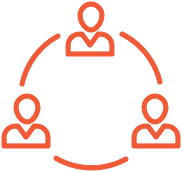Llegar a la cima de las operaciones jurídicas: lecciones aprendidas por Fortune 500
The growth of Legal Operations has been led by large legal departments at big companies. So they’ve got hard-won lessons to share about how to develop a Legal Ops function.
That role of larger companies in Legal Ops implementation was confirmed by the 2019 State of the Industry survey from CLOC. The headcounts tell the story of who’s taken the early initiative:
- Insurance companies, with the largest legal spend, have an average of 24 Legal Operations FTEs
- Large size companies average 14 Legal Ops FTEs & 2 Legal Ops contractors
- Small and mid-size companies have an average of 2 Legal Ops FTEs & 0 contractors
But it’s safe to say nobody has yet arrived at “peak Legal Ops,” where efficiency and performance are perfected. It’s a solid bet nobody ever will, but the gains made along the way are already driving ROI and organizational impact.
Even getting close to that plateau may be a long way off. For one thing, the discipline is still relatively new. Furthermore, Legal Operations teams have turned to technology to achieve greater efficiency, responsiveness, and transparency, and technology is ever-evolving. But it’s very much the journey, not the destination, that’s resonating across the legal industry right now.
What are three main lessons from early Legal Ops adopters?
Over the past year, Brian McGovern of Mitratech went out and met with over 100 legal departments and Legal Ops leaders at many of the biggest enterprises in the world. His own background as a head of Legal Ops gave him his own insights into the challenges these companies have had to deal with.
At our recent Interact 2019 user conference, he presented what he’d learned. The session, Key Findings of the Fortune 500, also included Rick Radice, VP & Chief Operations Officer – Law, Compliance, Business Ethics, External Affairs at Prudential Financial, Inc., and Justin Hectus, CIO/CISO at Keesal, Young & Logan and CIO at KP Labs Keesal, Young & Logan / Keesal Propulsion Labs.
The insights they were able to cover in that session were just the tip of the iceberg, and many more of them will be explored in a forthcoming ebook. But the three main lessons that could be drawn from the experience of these top legal departments?
 Do more with less
Do more with less
There’s never enough time or resources available to do most jobs, it seems, and that’s true in legal departments where the pressures to meet complex needs as quickly as possible are enormous. But one sobering fact? In a typical Legal Operations department, less than 10% of the work done delivers direct value to the client.
Optimizing available time and resources means appraising existing processes and eliminating any that aren’t delivering value. That involves being critical of workflows that mandate approvals, rework, emails, and retyping data. These are especially true of manual processes that should be replaced via legal workflow automation. Companies that have taken this approach, such as NetApp and Gilead, have already seen game-changing benefits.
 Get the right data to the right people at the right time
Get the right data to the right people at the right time
In legal departments, any project or process should start with a strategy that drives activity that can be reported upon after the fact. But even though legal departments sit atop vertitable mountains of data, even the more progressive Legal Ops teams only use a fraction of it.
What have Legal Ops leaders found is the best path toward utilizing data to optimize processes and spend? It starts with developing a great understanding of critical activities. This should begin with understanding how decisions get currently made in high-volume processes. The next step consists of developing driver metrics that help Legal Ops determine how data-driven decisions should be made. This allows Legal Ops to identify the right data sources to leverage in maximizing performance. Combined with the right visualization tools, this gives them the analytics needed to fine-tune work allocation, productivity, and spend.
 Build a team with diverse skills and backgrounds
Build a team with diverse skills and backgrounds
Recruiting a Legal Operations team with identical skillsets and experience will handcuff its ability to be flexible, agile, and innovative. But those are the very qualities necessary to the success of Legal Ops, according to Brian McGovern’s interviews.
Legal Ops has to reckon with responsibilities that involve everything from vendor management to IT, application training to administration, and dozens of other tasks. In other words, it’s the same as running any business unit. That requires putting a team in place with a diverse set of talents who complement each other and whose value extends well outside their respective lanes. As he explained recently: “People are the foundation of not just legal departments, but the whole corporation.” So putting the right people in the right roles is essential.
Going in-depth on Legal Ops lessons
We’ll be deep-diving into each of these three lessons and more in future blog posts, and in the upcoming eBook based on Brian McGovern’s interviews with Fortune 500 legal leaders.
While it’s an exciting time to be part of this industrywide transformation, there’s no reason it should be nerve-wracking. The learnings we’ll cover will provide clear best practices to follow in the smooth and quickly productive implementation of Legal Operations and legal technology for corporations of all kinds, including small to mid-sized companies and law firms.




